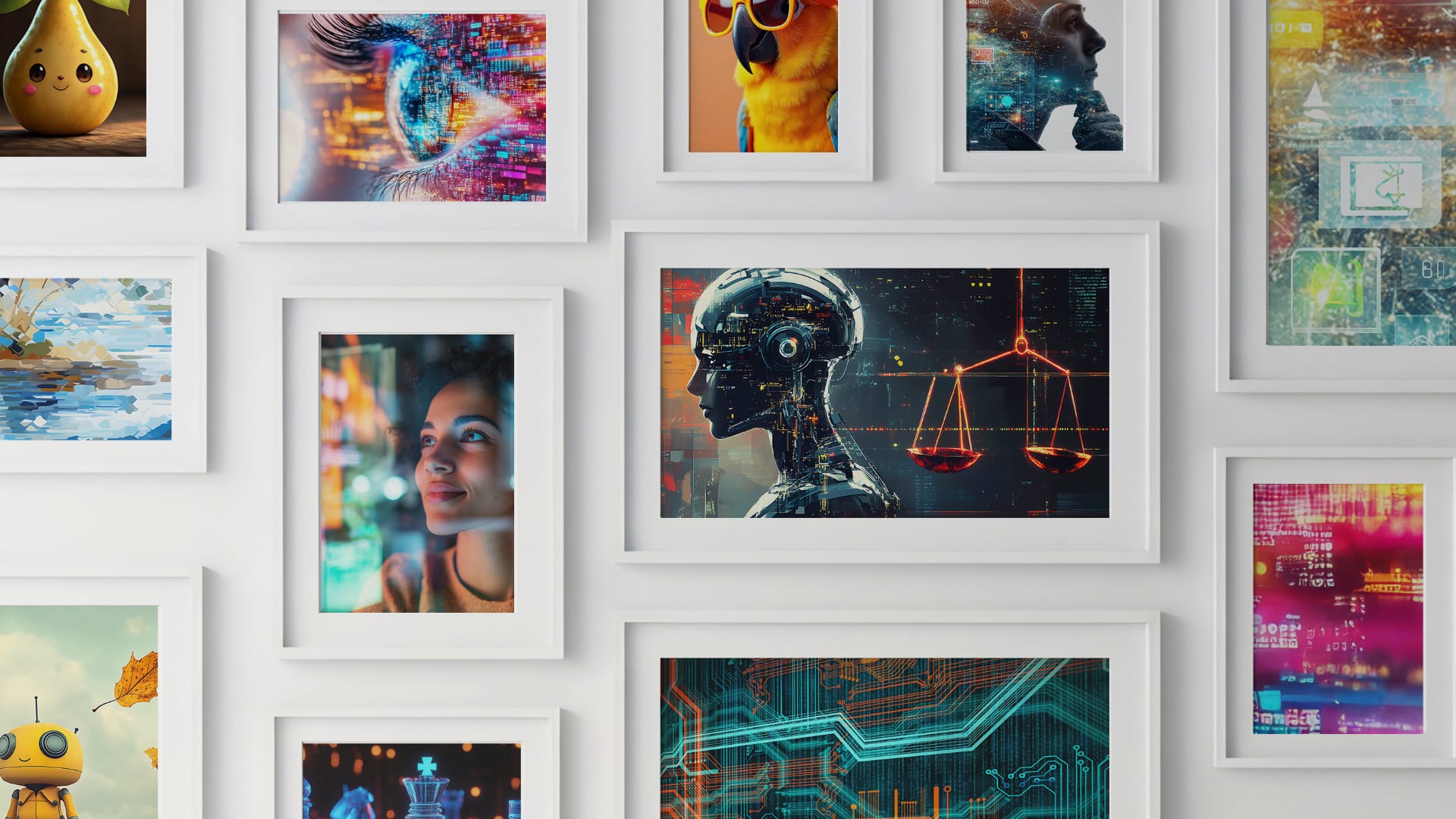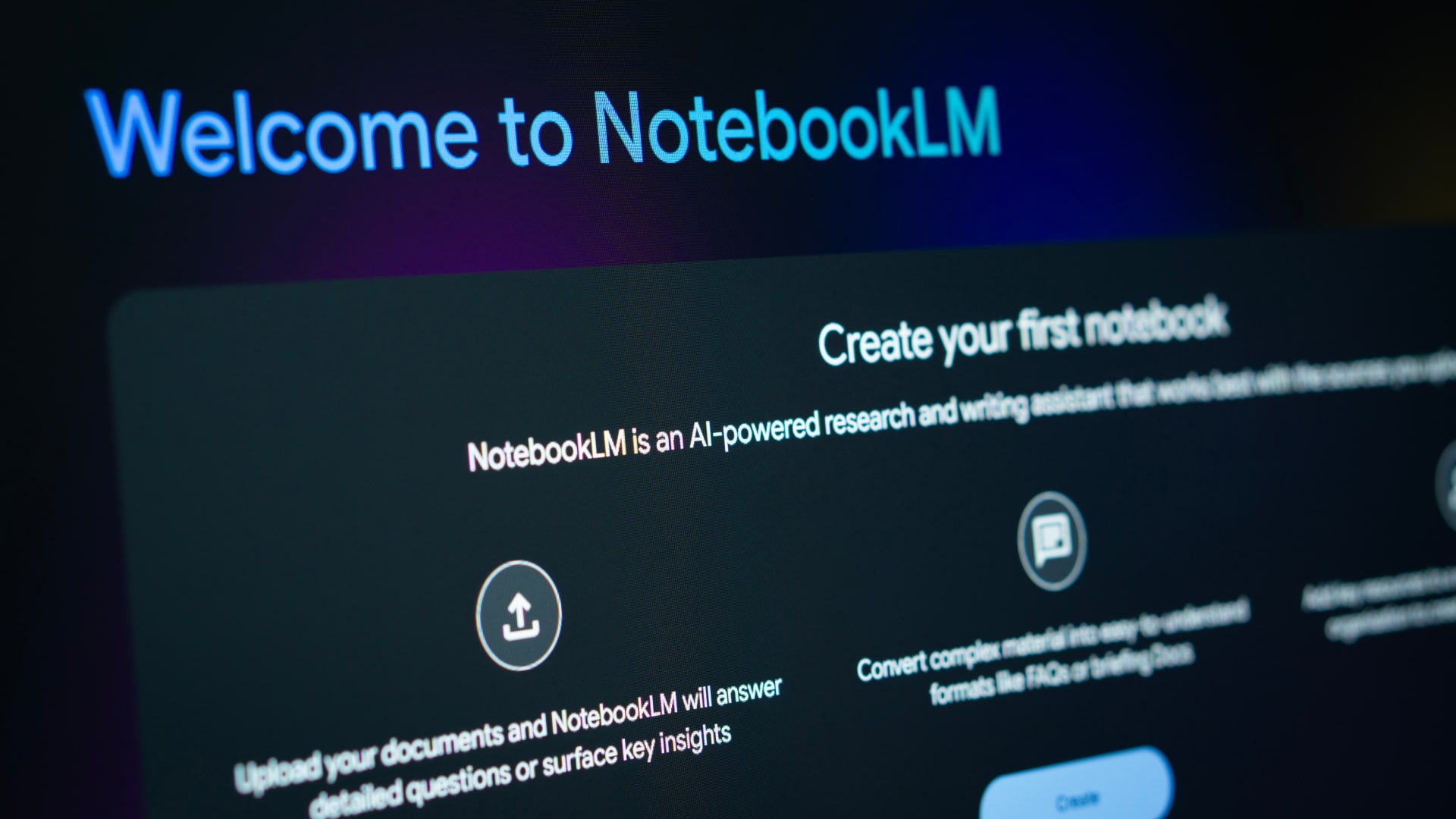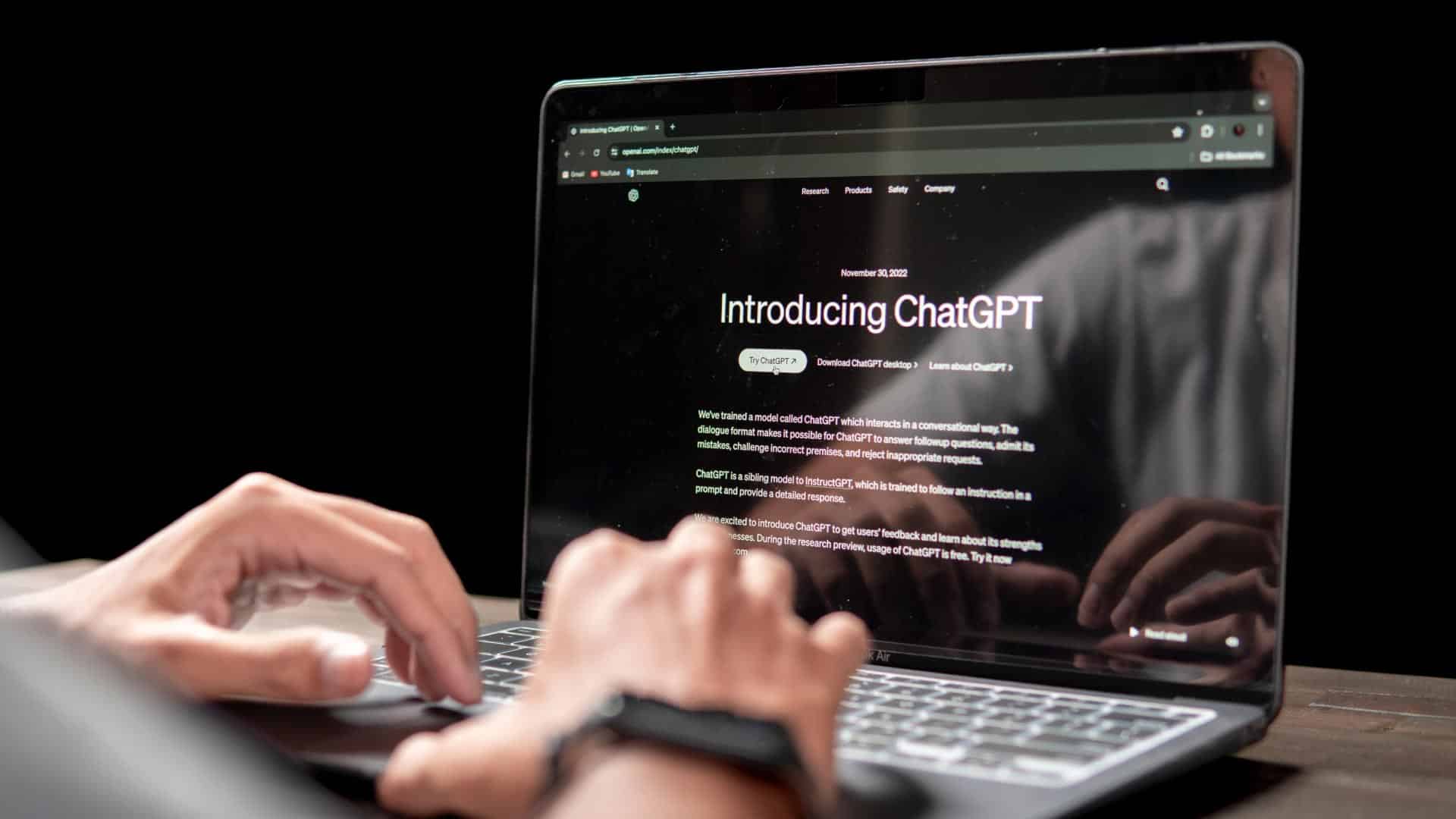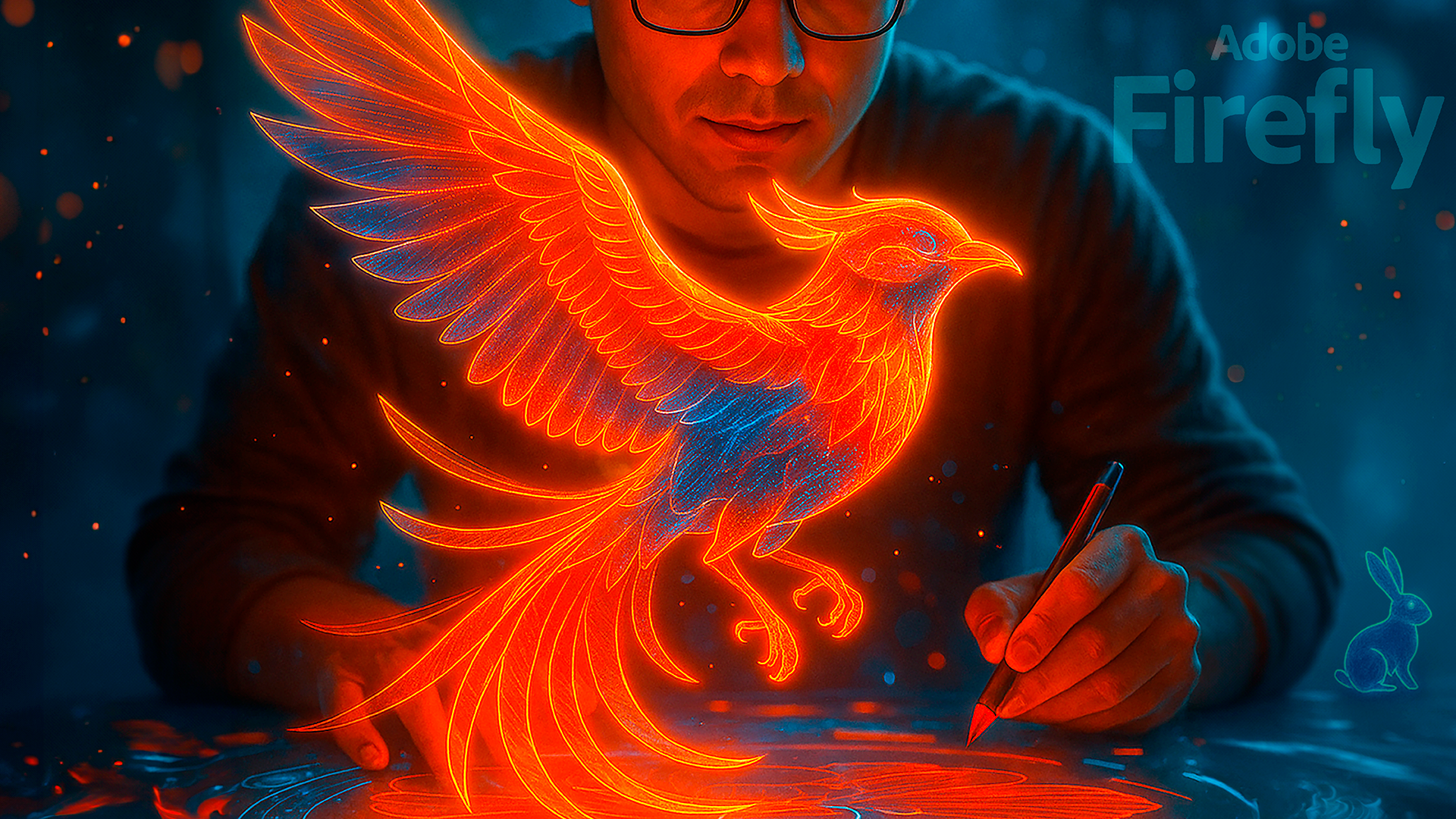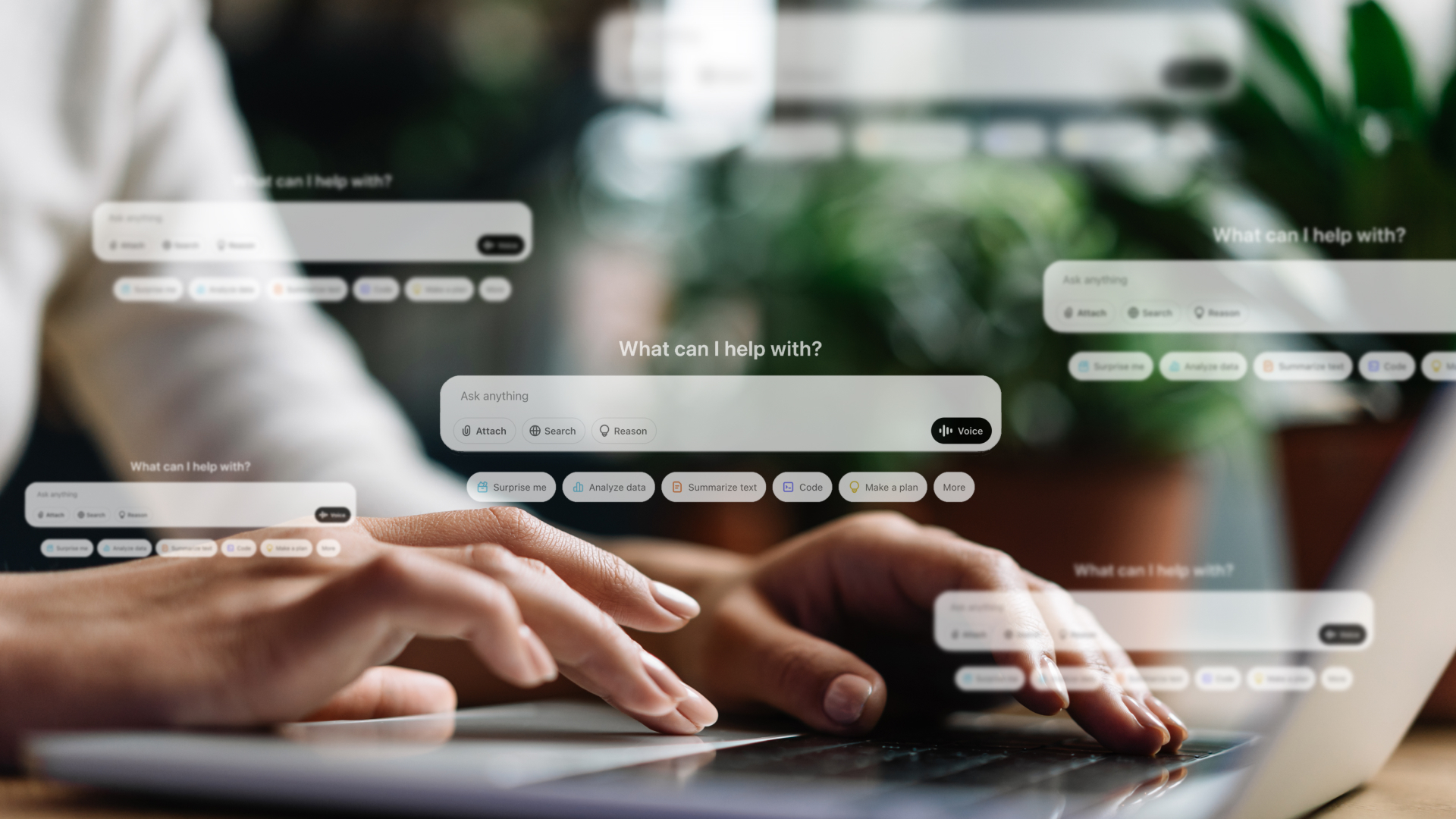Big data has received a lot of attention over the past decade. Industry events, strategy sessions and journal articles have celebrated the promise of massive datasets. However, the real strategic edge may not come from going bigger, but from getting smarter with highly focused, relevant datasets empowered by AI.
Marketers are increasingly embracing small datasets combined with the power of AI-assisted analysis. A carefully chosen, highly relevant dataset analyzed with assistance from AI delivers faster, more actionable insights than data lakes ever could.
The Big Advantages of Small Data
What does small data look like? These datasets are carefully selected, purpose-built collections of information that directly aligns with a specific business question or task. They can be quantitative or qualitative and need to be balanced and intentional in design. For example, 100 lost customer deep dives, 25 post-purchase in-depth interviews, 250 message testing participants, or 45 beta test participants.
Beyond quicker data collection, small datasets offer the advantages of easier storage and management, and lower costs. Collection timelines are shorter (often days rather than months), and the resulting data is easier for stakeholders to understand and act on. Small data supports agile iteration, putting marketers in a position to quickly course-correct and innovate.
When coupled with AI-assisted analysis, the advantage of a small dataset expands.
Faster Insights: AI can quickly group open-ended responses from a small dataset into meaningful patterns and themes. AI can group customers into segments in 15 minutes or less.
Agile Testing: This approach makes it possible to quickly design, execute and repeat testing, whether evaluating new product messaging, promotional offers or User Experience elements. The principle of “fail fast” becomes reality; marketers can try, learn and optimize faster than ever.
Decision-making clarity: Focused datasets interpreted with AI empower businesses to make confident, evidence-based decisions without being overwhelmed by the distraction of irrelevant information.
How to Get Started with Small Data + AI
Transitioning to small data and AI begins by pinpointing a specific business objective where targeted insights will create measurable value. Once a question has been identified, the next step is to assemble a balanced dataset that is relevant and representative. Marketers can unlock insights by either leveraging existing data from marketing databases or by collecting new data through market research methods such as surveys, interviews or other feedback methods. User-friendly AI platforms can then transform raw information into actionable conclusions. It’s important that all AI-generated analyses should be reviewed by human subject matter experts to ensure meaningful interpretation. Ensure the insights are actionable with clear recommendations. Finally, share successes internally. Championing the role of small data and AI will build momentum for future initiatives.
The union of small data and AI offers practical applications for marketers, including the following examples.
Audience Segmentation and Personalization: Rapidly segment data to develop or refine personas and deliver tailored messaging for each segment, driving stronger engagement and conversion rates.
Automated Reporting and Intelligence: AI-driven dashboards provide organized and updated information from compact datasets. Internal and external stakeholders can monitor results such as campaign performance and sentiment shifts in real time.
Customer Journey Mapping: Even when working with small samples, AI helps visualize buyer paths, uncover friction points, and highlight Moment of Truth touchpoints.
The real question isn’t whether to leverage the combination of small data and AI, but whether you can afford to ignore a strategic advantage that’s immediately actionable. In a world where speed, relevance and personalization drive growth, deploying focused datasets coupled with AI is evolving from a competitive advantage to a core expectation for high-performing organizations.
The Latest
We study the game as hard as we play it.
Learn with us what’s now and next.
Related Stories
If you’re like me, you now use AIs like ChatGPT, Midjourney, or Microsoft Copilot every day as part of your work. If you’re really like me, you’re seeing engineers, marketers and other partners use these off-the-shelf AIs as platforms on which to build bespoke tools or solve real business challenges. If you’re basically my long-lost twin, you’re championing this innovation within your organization—because “you + AI” isn’t just a productivity boost, it’s a new ROI narrative.
And, if you’re thinking like most business leaders would, a pretty logical question starts forming:
“Why wouldn’t I just use ChatGPT?”
Beyond the Allure of Off-the-Shelf AI
The appeal of off-the-shelf AI is obvious: it’s fast, it’s shiny, and, for many teams, it delivers a new baseline of productivity. But when the market is swimming in instant-access tools, “off-the-shelf” is just the beginning—not the answer.
Why? Because off-the-shelf AI rarely delivers brand differentiation.
Off-the-shelf AI is built for the median, not the individual brand. These AIs don’t think in terms of your brand’s voice or nuanced campaign objectives, and aren’t aware of historical lessons or performance data. Contextual intelligence remains a work in progress. Inexperienced teams may underestimate the hands-on effort required in off-the-shelf AI, and the “hidden costs” of investing further to shape on-brand, strategic output.
Pre-packaged AI platforms also aren’t always transparent about where your data ends up. For organizations in regulated spaces, or with sensitive first-party data, this lack of control introduces risks—a non-starter for many sophisticated brands.
What Bespoke, Agency-Built AI Unlocks
At Mod Op, we build customized AI solutions. And when the mission is differentiation, customization is everything.
An agency-guided approach means the AI is trained and tuned according to your market, your tone, your historic learnings, and your key performance drivers. You’re setting a new bar by turning proprietary insight into a lasting edge.
Bespoke agency solutions, which blend technology with expertise at every stage, require strategists and creative thinkers to be part of the workflow – nearly impossible to replicate with an out-of-the-box platform.
A one-size-fits-all tool rarely talks natively with the full suite of platforms, analytics tools, and proprietary data pipelines your organization relies on. A custom build allows for interoperability across existing processes, measurement strategies, and channels. Bespoke systems also grant marketers and businesses the power to rapidly iterate and innovate alongside your evolving objectives—even across multiple brands or campaigns.
Finally, bespoke agency-built AI brings accountability. Off-the-shelf solutions typically provide a black-box experience. Bespoke AI solutions can offer transparency on the “why” behind every insight, action, and algorithmic choice.
Higher Upfront Costs, Outsized Returns
Building or integrating bespoke, agency-operated AI is indeed a more significant investment than simply licensing. But through the right lens, that up-front investment is not just justified, it’s transformative.
Bespoke solutions provide long-term cost efficiencies, reducing the hidden costs we just mentioned. Agency-built AI can evolve with your brand rather than lag behind a vendor’s generic roadmap. This adaptability means you can respond to new market opportunities, regulatory changes, or customer demands quickly.
When your AI system reflects your proprietary data, brand voice, and business logic, you’re creating IP that can’t simply be copied by a competitor. This means faster time-to-market for novel campaigns and the ability to set trends, not follow them.
With full transparency on how your AI systems operate and make decisions, it becomes easier to connect the dots between investment and measurable outcomes, refining your model for maximum impact and compliance.
Making the Case: Why Not Just “Use ChatGPT”?
The next time you consider “why not just use ChatGPT?”, remember:
- A bespoke AI is a strategic asset, not just a utility.
- Custom, agency-operated systems create defensible value through brand- and client-specific data, workflow integration, and proven human expertise.
- With off-the-shelf, you join the pack. With a bespoke solution, you chart your own course, and can prove the ROI difference at every step.
Most importantly, every team is on their own journey with AI. But when the goal is true differentiation, ROI, and resilience, building smarter, together, beats buying what’s on the shelf.
The Latest
We study the game as hard as we play it.
Learn with us what’s now and next.
Related Stories
Over the last couple years, marketers and businesses have been enthusiastically finding good use cases for AI technology. Right now, the focus has turned to envisioning the ways individual professionals and entire businesses can transform the way they get work done through innovative use of AI. AI is fostering cross-team collaboration and rewriting marketers’ roles and career paths. But to unlock AI’s full transformational potential, the business needs feedback and vision from all functions and levels of the organization. Forward-looking marketers can seize this opportunity, rooted in their own experiences with using AI at work, to become leaders of change in the business.
You Need a Strong Foundation Before Building an AI Framework
Marketers need to build a foundation of trust and transparency to run AI-related initiatives, while concurrently balancing the time constraints all marketers face. That foundation is responsible AI use.
A recent McKinsey report revealed that only 18% of businesses have formal AI councils – for codifying and guiding responsible AI usage – in place within their org. With AI integrated into core processes at an ever-larger share of businesses, this is concerning. But it also shouldn’t hold business leaders back from adopting useful, transformative AI tools.
Even without an AI council, business leaders can take a step back, consider their values and the types of compliant data they have available, and establish guiding principles that everyone across the business can reference and follow.
Understanding Responsible Use Means Understanding and Mitigating Risk
A responsible use policy provides a framework for the ethical and safe use of AI, including data privacy, transparency, and the responsibility of building trust internally and externally.
The human professional needs to stay focused on breakthrough moments for the business – connecting different tools at different points in the process, and collaborating with people who work outside of your own skillset. Responsible use makes cross-function collaboration possible.
The first step is to assess the risk level of AI, which is a factor if you’re using any AI tools in the business. Start by locating points of potential risk. One really good way to do this is by conducting an anonymous, company-wide survey to find which AI apps people are using and gaining value from – and to find out why they’re using these apps. From that informed starting point, move on to thinking about these important types of risks:
- The likelihood that the business already uses the AI, and the specific use cases, end users, and environments.
- When it’s necessary to approve an AI app, overall or within a specific use case. Ask yourself and the people using the app: If our org uses and scales this tool, what’s the worst possible outcome? From there, begin ideating what amount and types of controls you need in place to best protect your business, employees, and customers.
- The measurable value the AI generates for the team and the business. Consider the metrics that are most important for your business – efficiency, productivity, business growth impact, revenue impact, and any other key metrics.
- ROI – whether the efficiencies and cost savings of the tool are worth the cost of the tool itself.
An AI council matters because it empowers the business to continue gaining value from the tools without slowing momentum. The AI council also manages the value process – maximizing the value of tech solutions, and making sure useful tools aren’t siloed away. The AI council is dedicated to exploring all use cases that can deliver value for the business, and to making sure the costs of the tools makes sense for the business.
When cross-functional collaboration happens, we can really start to see scalable value in the AI tools. The upfront investment of time and strategy pays off in dividends as scale increases.
AI Strategy and Vision Leads to AI Value
Marketers should step back, reflect on their professional experiences, and think about their day-to-day and big-picture challenges – not only for themselves internally, but for the customers they serve. Take these steps as you begin imagining AI strategy:
- Start with listening to internal staff. Understand their priorities and what it means to maximize their strengths in their roles. Ask open-ended questions about people’s personal vision: If you could do anything in this role or company to make a significant impact, what would you love to do? What have you always wanted to do, but haven’t had time, capacity, or resources to do yet?
- Take fundamental courses on AI in Marketing and Business to unlock your thinking of future potential for the business, employees, and customers you serve.
- Take a prompting course together to unlock your creativity and the potential of the tools.
- Experiment with approved, responsible AI tools within your responsible use guidelines to find other roads for your marketing to explore, and don’t get hung up on any perceived imperfections of these tool (like, ”This is the dumbest they will ever be”).
- Have conversations with partners and customers to find out what they’re finding value in with AI, and what they expect of products and services like yours to incorporate or what value they expect to be unlocked by AI and new technology.
- Work with leadership to understand these insights across these items and clearly define what growth and opportunity you are aiming to unlock with AI. Use the AI council in collaboration to help then define how to get there and what use cases from your insight gathering to start with.
The more we test and use AI tools for functions such as data science, coding, and content and asset creation, the more marketers will be free to explore their own creativity and evolve in their careers. Along the way, we learn how to view business objectives from the angle of other functions throughout the business.
Rest assured, when marketers automate as much work as they can – and they should – they won’t lose budget. Instead, their value to the business increases greatly.
The Latest
We study the game as hard as we play it.
Learn with us what’s now and next.
Related Stories
In February of this year, OpenAI cofounder and former Tesla Director of AI Andrej Karpathy made a pronouncement about the future of AI-enabled coding. He gave it an evocative term: “vibe coding.” “You fully give into the vibes, embrace exponentials, and forget that the code exists,” he wrote on X. “I just see stuff, say stuff, run stuff, and copy-paste stuff, and mostly it works.”
On the surface, this sounds close to one of AI’s most heavily touted use cases: writing code very quickly, and enabling non-technical people to build software. And among experienced developers, AI tools are reshaping coding workflow and software testing. But the AI isn’t good enough yet to allow a person to actually “feel” a software product into existence. Comparably to how gen AI needs some finessing to create digestible written content and images, vibe coding needs specific prompts. If you want the software to have a particular “feel,” you have to explain it to the AI in clear language – and also explain the desired outcome, the end user’s needs, which sources to pull from and which to avoid, and so on.
Just as ChatGPT doesn’t understand ethics or critical thinking, AI coding tools don’t necessarily understand all rules and product requirements that go into creating software that does what it’s supposed to. The AI may write code that leaves the software vulnerable to malware attacks or data security breaches. It can also overlook key considerations around governance, privacy, accessibility, regional/government regulations and more. Someone still needs to know the project and industry well enough to understand what could go wrong in the code, and to understand the code well enough to fix errors.
Mod Op’s innovation team is diving into vibe coding, using programs like Cursor and Claude Code. “The vast majority of the lines of code coming out of our team are co-written with AI,” says Aaron Grando, Technology Director at Mod Op. “In some cases, tasks that used to take me a week to code now take about a day.”
Note that verb, though: “co-written.” Vibe coding, for an experienced developer, can accelerate the engineering side of projects – but success depends on the developer’s expertise. Aaron sees AI as a good way to do regression testing – making sure nothing broke after making a code change – to quickly debug errors and reduce QA overhead. Vibe coding can help write tests to verify whether the software works properly, but an experienced developer brings in their knowledge of the conditions and edge cases that need to be tested.
For developers, AI can help understand not only whether things work, but how and why. The efficiency gained through effective use of AI also positions developers to grow in their roles, in multiple directions. Now there are more opportunities for developers to explore how to apply their skills to specific areas of the overall business. “I now call myself a product specialist, and see my work through that lens, but I’m still doing engineering work every day,” says Aaron. A potential outcome of vibe coding is that coding will no longer be primarily the domain of developers – and it could also cease being the defining factor of a developer’s role. On the one hand, Aaron says, “There are going to be more coders, but fewer developers.” On the other hand, “I think it puts developers closer to business value than just being the developer that knows how to code.”
For the beginner coming to vibe coding from a non-technical direction, it’s wise to start small. As far as we can tell, no one is using vibe coding to build a copy of any enterprise software they use at work. A beginning vibe coder should start with a very specific app or software concept. This makes reviewing the code and testing the software easier. It’ll also give you an idea of just how specific your prompts need to be in order to produce even a simple app. For the experienced professional, vibe coding creates opportunities for users to build and test prototypes quickly, and for building highly specific niche applications for their businesses.
Will the term “vibe coding” stick in the long run? That remains to be seen. But Mod Op believes the process we’re calling vibe coding today will gain steam and inspire real change in how businesses turn ideas into tools, and in who gets to be part of that process.
The Latest
We study the game as hard as we play it.
Learn with us what’s now and next.
Related Stories
What’s your relationship with AI? If you were to ask me that question, I would say AI is like my “boyfriend.” We’re at a stage where I still get the butterflies when “he’s” around. We haven’t decided where exactly we’re going, but we’re excited about doing it together. We’re in this for the long haul. Will we ever get “married?” It’s tough to know what that word would mean for us in the future. But we’re certainly going to move in together.
The question for marketers today is not whether you’re using artificial intelligence tools to speed up workflow and find fresh inspiration. A better question is whether the AI is improving your work and positioning the marketing team as an invaluable resource to the business. Is AI taking our jobs away? Not yet — but some businesses, including IBM are already making snap judgments that it will, and they’re making marketing staffing decisions accordingly. For marketers, there’s an opportunity to add human experience and skill to advanced tech, and to show why the human element is irreplaceable.
Innovation requires a broad range of skills and experience
AI is accelerating a transformation of roles within businesses and marketing teams, and Mod Op is on board with this change. We’re using AI to give marketers the freedom to grow their skillsets and find new solutions and strategies. I believe strongly in learning diverse skills, getting outside of what you might think of as your lane, and following your inspiration. But they need the opportunity – the time and the tools – to explore new things. I began my own career not in marketing but in IT, as a developer. I left an internal IT role to work for a brand agency, and I learned amazing new skills: What does it mean to really interpret the data and come at it from a human-centric approach? What do the patterns in the data mean from that angle – a very different angle than software engineers usually think about?
At the same time, marketers usually don’t have a connection of the data scientist or engineer’s role.. But they need it now. I would challenge any marketer today to take the initiative and begin learning relevant technical skills. Take basic statistical data science classes, or Python classes. The goal is not to become an engineer, but to demystify what AI is and how it works. Emboldened by new knowledge, marketers can begin identifying new marketing use cases, recommending customizations to the AI tools, and seeing new opportunities for collaboration and continued professional growth.
Finding valuable new uses for AI isn’t the only reason why marketers should lean into broadening their skill sets right now. A more diverse skill set is a competitive advantage for each individual marketer in the workforce. As long as there’s even a question about whether AI can replace human professionals, businesses will take it upon themselves to answer that question, and to take action accordingly. AI in itself isn’t actually replacing people now, but we’re seeing businesses taking big (if risky) bets and letting go of marketing professionals. A broader skill set is always helpful for hireability and job security.
Data usage is a competitive differentiator for AI-driven businesses
Today, any responsible marketer is thinking about using AI tools to their competitive advantage. But the most innovative ones are thinking about the competitive advantages of collecting and processing data ethically. Right now, marketers have access to generally the same types of AI tools and apps. So to stand out, they add their deep understanding of the consumer into the mix. That understanding is essential to training the AI to process only the data necessary to enhance the customer experience. Mod Op is eager to explore AI apps as they come into the marketplace. But at the same time, we’ve set up a compliance and governance program to isolate where those apps are tested and who has access to them, and to make sure we understand the data. Due diligence is an essential process that must be continually ongoing.
If you want to use AI to add value to your and your team’s marketing work, you need to avoid the common trap of expecting AI to instantly provide magical solutions to complex problems. To continue to do standout work, you need to collaborate, to understand more of the tech teams’ thinking, and to take ownership of your business’s tech stack innovation. The marketer’s grasp and understanding of their audience has never been more important than it is now, with younger consumers increasingly expecting trust and transparency from brands. This is the time for teams to select their data sets and tools wisely. Marketers aren’t being replaced by AI. They’re positioned to guide the whole business to the most useful, ethical, and valuable usage of AI.
The Latest
We study the game as hard as we play it.
Learn with us what’s now and next.
Related Stories
In the last year alone, generative AI traffic has surged by an astonishing 1,200%. This isn’t just a trend, it’s a fundamental shift in how consumers discover information, products, and brands. At Mod Op, we’ve been pioneering the intersection of creativity and technology long before it became fashionable. Now, as Large Language Models (LLMs) reshape the digital landscape, we’re helping enterprise brands leap up the learning curve and secure an unfair advantage in this new frontier.
The Shifting Landscape
Traditional SEO focused on ranking websites in search results. Large Language Model Optimization (LLMO) or generative engine optimization (GEO) is about ensuring your brand appears as a trusted source in AI-generated responses. With Google’s AI Overviews reaching 1.5 billion monthly users, ChatGPT commanding 600 million, and Gemini growing to 350 million, the stakes couldn’t be higher.
Gartner predicts that by 2028, 50% of all search engine traffic will vanish as users migrate to conversational AI interfaces. Exhilarating? Yes. Intimidating? Also, yes. But like any technological revolution, the greatest opportunities belong to those who move first and move strategically. Also, yes. But like any technological revolution, the greatest opportunities belong to those who move first and move strategically.
Critical Pillars for LLM Visibility
Enterprise brands need a deliberate approach to LLM visibility that balances technical implementation with creative strategy. Our work with industry leaders has revealed four critical pillars:
Entity Optimization: LLMs understand the world through entities, people, places, products and concepts. Clearly defining your brand entities and their semantic relationships creates the foundation for AI visibility. This isn’t just about keywords; it’s about building a comprehensive digital identity that LLMs can confidently reference.
Knowledge Graph Integration: Securing your place in structured data repositories like Google’s Knowledge Graph dramatically increases your chances of appearing in AI responses. Our enterprise clients who’ve implemented comprehensive schema markup have seen up to 40% higher visibility in LLM-generated content.
Citation-Worthy Content: LLMs are designed to cite authoritative sources. By creating original research, proprietary statistics, and genuinely insightful content, you transform your brand from a search result into a reference point. This is where creativity and technology truly converge; factual authority delivered through compelling narratives.
Platform-Specific Optimization: Each major LLM, ChatGPT, Claude, Gemini, Llama and Grok, has unique characteristics that demand tailored approaches. The brands seeing the greatest success are those optimizing specifically for each platform’s distinct citation patterns and content preferences.
LLM Audit to Action
For enterprise brands ready to capitalize on this opportunity, the path forward requires both immediate action and strategic patience. Begin with a comprehensive LLM visibility audit to establish your baseline presence across platforms. Then implement technical foundations like schema markup and entity consistency before expanding to more advanced content and authority-building initiatives.
Measurement is critical, track not just mentions but the accuracy of your brand representation, the contexts in which you appear, and the traffic driven by AI referrals. This isn’t a set-it-and-forget-it strategy; it’s an ongoing process of refinement as LLMs evolve and user behaviors shift.
The Unfair Advantage
The most successful companies of the future won’t lean solely into tech and AI. And they won’t lean solely on creativity. The standard setters of the next chapter will be the most creative humans using tech and AI in the most creative ways.
At Mod Op, we’re helping enterprise brands navigate this convergence, turning the intimidating complexity of LLM optimization into a clear competitive advantage. The window for establishing a first-mover advantage is open now, but it won’t stay open forever.
The brands that master LLM visibility today will be the ones consumers discover tomorrow. Let’s push the edge of what’s next together.
The Latest
We study the game as hard as we play it.
Learn with us what’s now and next.
Related Stories
While it’s always appropriate to forecast top marketing trends to watch for at the beginning of the year, the changes and new developments of 2025 call for a mid-year catch-up. The rapid pace of technological innovation and the challenges of navigating economic conditions underline the importance of pausing and recalibrating while we have a chance. Seize the opportunity to get ahead of the game: Leaders from across Mod Op have weighed in on where they see marketing going through the latter half of 2025:
Brand identity and brand personality will be top of mind.
Branding today means reinforcing or asserting the brand’s identity, connecting on an emotional level, at all touchpoints. Philip Congello, Mod Op’s EVP, Client Success, sees marketers increasingly eager to lean into the “brand world, where all aspects of a brand’s visual and experiential elements are unified.” This is a trend Phillip has been watching all year. Today, he advises marketers to “turn marketing into a connective tissue — building immersive narratives, synchronized product and channel launches, and even translating packaging into interactive gateways via QR, AR, or loyalty tools.”
We also see B2B focusing more on brand. Hannah Woodham, Mod Op’s SVP, Paid Channel Marketing & Operations, sees a shift away from heavily bottom-of-funnel tactics for B2B marketers. “Maximizing brand impact earlier in the journey – and leveraging the influence of third parties within the buying network – is proving to enhance revenue enablement across the funnel,” she says.
AI is transforming how market research is done.
AI now empowers researchers to dramatically reduce the time necessary to analyze and recognize patterns in open-ended survey responses. And AI is becoming even more valuable in market research with the rise of synthetic data. “By using AI to generate realistic datasets, researchers can run studies without actual respondents,” says Lauren Schmidt, Mod Op’s Senior Director of Market Research and Strategy.
Matt Bretz, Mod Op’s EVP, Creative Innovation points to Dentsu’s recent acquisition of Evidenza, which enables Dentsu to take data around real human beings and create “digital twins” that respond to surveys the same way those humans would. “Assemble a large group of these digital twins, and you have a synthetic audience with which you can test indefinitely, almost instantly, inexpensively and securely,” he says.
AI will become more prominent in entertainment content development.
We’ve heard a great deal about generative AI’s ability to supercharge the development of ad creative and marketing materials. But right now, Fabio Fiss, Mod Op’s VP, Technology sees a big question emerging within the entertainment industry – how gen AI should interact with publishers’ and streaming platforms’ intellectual property. “I think [these businesses] will determine that if AI is to some degree ‘the enemy’ – best to keep your enemies close,” he says. Marketers will need to watch closely; in the event this causes IP holders to move toward taking AI-powered marketing in-house for the sake of security.
Where privacy and security are concerned, we can also expect AI to continue playing a role, and to make good on its promise to drive greater value from smaller data sets. “Targeted datasets are helping teams move faster, find more actionable insights, and save money compared to large-scale data approaches,” says Lauren, a longtime advocate for the power of small data.
Shorter tech development cycles and economic uncertainty will elevate the importance of marketers’ expertise and input.
Tech advancements have given marketers day-to-day efficiencies, but the pace of innovation has also demanded greater agility. “Tech cycles have compressed, placing greater pressure on marketing teams to remain competitive and innovative,” notes Holly. The task for marketers is not only to monitor the tech marketplace for new and useful solutions. Their task is also to continue evolving their own skill sets. By extension, the business’s task is to foster a culture of experimentation – “quick wins (and fast fails),” Holly explains. “Balancing these imperatives with compliance and risk management is a growing challenge.”
Marketers will demand ROI from their current and future tech investments.
Innovative tech promises value to marketers, but it also costs money. Fabio speaks of an “ROI reckoning” through 2025. Buyers will be focusing on measurable performance and bottom-line business impact. That focus will certainly impact the way businesses vet and choose tools, and the way they assess the tools they already have in their tech stacks. In other words, Fabio sees martech stack audits coming, with businesses looking closely at what’s truly aligned with their present-day goals. And again, this is where marketers can deliver value. “Whether it’s through stack simplification workshops, platform performance audits, or clear ROI frameworks, our role is not just recommending tools – it’s building business cases and helping clients operationalize change,” Fabio says.
As marketers continue moving forward, they’ll be balancing their ambitions against their risk management skills. Innovation is coming quickly, but the current business climate may call for gradual, iterative steps toward goals. Matt leaves us with this thought, “A project that a few years ago may have been more convenient to look at over the course of a year will be easier for all to embark upon today if it’s broken up into pieces with clear and less sweeping KPIs set for them.” The task for marketers is to invite closer collaboration with their business partners. Marketers have this opportunity to lead the way to a promising future.
The Latest
We study the game as hard as we play it.
Learn with us what’s now and next.
Related Stories
When marketers need answers and insights to make the most well-informed decisions, they turn to their marketing dashboards. But are their dashboards truly working for them? Increasingly, the answer is “no.” Marketers deserve better – and through advanced AI, “better” has become a reality.
In a car, the dashboard is where you monitor speed and fuel levels and see service alerts – all key indicators of the driver’s overall performance. In the dashboard of a marketing tool, marketers can monitor campaign performance – traffic, engagement, conversion metrics, and more, ideally at a glance.
Of course, any modern marketers will tell you their dashboards fall far short of that ideal. Dashboards require marketers to search and search to discover the right insights for the moment. Marketers need solutions that deliver those insights. And AI is making this transformation to a new model possible. AI’s potential here is so great that it’s allowing marketers to move beyond dashboards – and to put the power of a decision engine in their own hands.
AI Is Heralding the Next Generation in Marketing Decision-Making
So what changes in a marketer’s day-to-day life when they adopt a decision engine model? In short, they gain agility, efficiency, and focus. More broadly, marketing teams are given an opportunity to revamp their operations overall. Dashboards are built to monitor. Decision engines are built to guide the marketer, enabling them to be proactive and customize their approach through intelligent and responsive systems.
With the continuous expansion of marketing channels to monitor comes immense volumes of data. Marketers need to leverage that data to decide what actions to take next. But in a traditional dashboard, that’s often an awkward and time-consuming proposition. The interface often feels both static and old-fashioned. These are your charts, but which are the right charts? These are your metrics, but what patterns do they suggest? More to the point, what should we do next to succeed?
Also, “dashboard fatigue” is real. A recent Gartner study revealed only 38% of CMOs believe their dashboards actually empower them to make better decisions. Teams commonly abandon dashboards, too. BI and dashboard tools have an adoption rate of only 20%, according to BARC.
Don’t Think Charts. Think Partnership
Marketers today need more than charts – they need a decision–making partnership. Next-generation AI tools can provide that partnership – answers to questions, relevant alerts, and more. Here’s what an AI-powered decision engine does for the marketing team:
- Delivers insights to you directly. Marketers receive timely alerts and updates about new trending patterns across KPIs, rather than needing to search manually.
- Speaks to you like a human. Rather than clicking and filtering to get highly specific insights, marketers can simply ask generative AI a question in conversational language and get a clear answer right away.
- Delivers insights within your business’s workflow and communications tools. Instead of logging in, marketers can now embed analytics into their workflow by choosing to have them delivered straight to email, Slack, project boards, and other tools where marketers do their work.
- Forecasts future trends and recommends decisions. Dashboards tell marketers what already happened. Decision engines illuminate what will happen next and how to best meet those trends.
How the CMO of Real Estate Giant JLL Put AI to Work – and Succeeded
We’re seeing leading businesses adapt to today’s business realities, innovating and investing for the future, and succeeding in the marketplace. Case in point: Commercial real estate giant JLL needed to reassess the effectiveness of their dashboards in 2023. Global CMO Siddharth Taparia recognized the limitations in the older dashboard models JLL was relying on. His proposed solution? A proprietary large language model, which JLL would custom-develop to serve the company’s specific needs.
The LLM they built, JLL GPT, totally reimagined their marketing operations. New efficiencies abounded. For example, where the process of drafting partnership memoranda used to take four to six weeks to complete, now it took less than five hours. The difference between their previous methods and new methods? Their old dashboards served more as reporting tools, but the new tools acted more like decision engines. The efficiency and effectiveness of JLL’s innovations inspired 400 of their marketing professionals to adopt AI and begin reaping the benefits of intelligent systems.
Modern Marketers Need to Demand Better – and Define “Better”
Now is the time for marketers to take action to find the tech they need to thrive today and into the future. Here’s how to start moving away from dashboards and toward AI-powered decision-making:
Conduct a full dashboard audit. Ask your team and any other relevant stakeholders: Which of these current tools do you actively use? Which are important to your decision-making? Which help you understand real ROI? And for those that are not delivering value, how can they be cut or consolidated?
Test agentic tools. Gartner forecasts that 30% of new applications will use AI for proactive decision recommendations by 2026. Now is the time to test AI tools and evaluate whether they’re helping the marketing team. Marketing leaders should choose an AI assistant, alerting system, or conversational analytics tool to test. It’s an important part of keeping a competitive edge.
Demand better from your tech partners. McKinsey research tells us businesses that embed AI in their decision-making process are more than 2x more likely to “outperform peers in marketing effectiveness.” The imperative for marketers is to seek AI-powered solutions that uncover and deliver insights that impact their own goals and objectives, and that recommend next steps.
Connect insights to real actions. Harvard Business Review research shows that turning data analytics into action is a challenge for 72% of companies. Any AI-powered decision engine must provide measurement to fill in that gap, understand the real value of the tools, and improve performance meaningfully.
In today’s marketing landscape, the growth and the momentum is in tools that enable and even encourage deeply informed decision-making, agility, flexibility – and in the end, success for the marketing team that boosts the whole business’s bottom line. AI is making this finally happen – and demonstrating marketers really have outgrown the old dashboard model. To find out more about how and where Mod Op sees AI rising to the occasion and supercharging B2B marketing, reach out to us today.
The Latest
We study the game as hard as we play it.
Learn with us what’s now and next.
Related Stories
The 2025 Cannes Lions Festival proved once again to be a hub for the latest thinking about innovation, technology and the future of advertising.
Early at the show, EVP of PR, Chris Harihar, shared some of the shifts happening in the adtech industry that were prevalent at Cannes. But the points Chris highlighted weren’t the only advertising industry conversation that happened during the show.
Several of Mod Op’s advertising industry clients had a presence at Cannes Lions this year, including GumGum, Yahoo and Vantage. Here are some of their takeaways from the event:
Media and Commerce Converge
While at Cannes, Drew Cashmore, Chief Strategy Officer for retail and commerce media orchestration platform, Vantage, observed additional signs that media and commerce are converging.
As he shared with Performance Marketing World: “At Cannes, there was a noticeable shift as traditional digital media companies like Meta, Reddit and Google explored how to collaborate with retailers in the retail media space. This convergence signals a growing recognition that commerce and media are no longer separate disciplines. As these players look to coexist and compete, the lines between brand advertising and retail activation are blurring.”
Read the full article: “Why in-store media is a sleeping giant for marketers”
(You can also catch Drew on Mod Op’s Leader Generation podcast, where he shares additional insights from Cannes Lions.)
Contextual Signals Win
GumGum co-hosted an Adweek House Cannes Lions Group Chat where industry leaders explored how contextual signals can outperform behavioral and demographic targeting and drive performance.
As Adweek’s Michael Keenan summarized in his piece on the session: “Panelists agreed that effective targeting begins with what a person is doing at the moment, not who they are on paper. But it can’t be done without the right technology.”
As GumGum’s Chief Marketing Officer, Kerel Cooper, shared, “We believe there’s a world where we can move beyond demographic information to help brands connect with who they want to connect with and provide a great experience for them.”
Read the full article: “Contextual Signals Win as Data Accelerates Marketing”
Advertisers are Exercising Caution
As Yahoo’s Chief Revenue Officer, Rob Wilk, shared with the New York Post, “If you look at what you read, it seems way gloomier than what I experience day to day.”
Rob noted that many advertisers are taking a strategic “wait-and-see” approach and those “holding on to dry powder” and waiting to spend versus “slashing budgets and pulling back.” Rob is also seeing that same caution reflected in dealmaking, due in part to the tariff conversation.
Read the full article: “Media, ad execs and celebs return to Cannes Lions”
Cannes Lions 2025 made one thing clear: the advertising industry isn’t standing still – it’s recalibrating. As media and commerce continue to collide, contextual targeting gains traction, and brands tread carefully amid economic uncertainty, the road ahead demands both innovation and intention. For marketers, that means moving beyond the buzz and leaning into strategies that are data-smart, audience-focused, and ready for what’s next.
The Latest
We study the game as hard as we play it.
Learn with us what’s now and next.
Related Stories
This year, Cannes Lions isn’t just a celebration of creativity and marketing. For better or worse, it’s a stress test for an industry in flux. From agency restructurings to economic uncertainty, advertising is being reshaped in real time.
And in ad tech — which underpins it all — the pace of change is even faster, fueled by AI, shifting channels, and growing complexity around data. Amid the plentiful rosé and sunshine, here are the three themes I expect to dominate ad tech conversations this week.
How Real Is Your Agent?
AI dominated Cannes last year, but the conversation is evolving. It has shifted from generic AI hype to Agentic AI, the systems that don’t just generate responses but actually take action and complete tasks on your behalf, autonomously and at scale. In theory, this should be a watershed moment. But in ad tech? It’s mostly noise. Companies are slapping the term “agentic” on any product with a basic prompt-response interface. That’s not agentic AI.
What we’re seeing is a wave of opportunistic rebranding as companies chase fresh funding. Expect “agentic” to be one of the most abused buzzwords at Cannes this year. True agentic systems are pre-trained and actually intelligent, capable of making decisions and executing workflows with minimal human input. Most ad tech companies still don’t have a credible AI story, let alone real agentic capabilities. But that won’t stop them from pretending they do.
CTV Wants SMBs, and It Shows
Cannes isn’t exactly known for championing small businesses. But 2025 has brought a growing push to get SMBs and DTC brands more meaningfully involved in connected TV, and the buzz around it will likely continue along the Croisette this week. CTV can’t scale forever without broader advertiser participation. To unlock the next phase of growth, platforms need to open up programmatic access and tools and make “performance TV” feel real. They also have to make it accessible — both in cost and in complexity — to businesses without Super Bowl budgets or major agency support.
This explains why companies like MNTN are showing up at Cannes ready to make a splash. Roku and Comcast are also leaning into SMBs, offering lower entry points and self-serve tools designed for smaller advertisers. The message may not be tailored to the Cannes elite, but the opportunity is clear: CTV needs a middle class.
Retail Media Is Dead. Long Live Media Networks
Retail media is undergoing an identity shift. In fact, it’s no longer just about retailers. Marriott, Western Union, and even Chuck E. Cheese are launching media networks. The term “retail” can’t contain what this has become. At this point, any brand with scaled first-party data and media assets can spin up a media network and, increasingly, they are. (This is a drum I’ve been beating for some time, and the IAB recently endorsed that thinking.) More importantly, the focus is moving well beyond owned-and-operated properties to include off-site extension. Initially, retail media was prized for its proximity to purchase, with ads running on retailer-owned sites near checkout. But now, the value increasingly lies in using that data across the open web.
Marriott’s media network, for example, isn’t just about marriott.com or Marriott in-app inventory. It’s about activating traveler intent data across the broader internet. The same goes for financial and entertainment brands, as well as any other media networks. Expect to hear less about “retail” and more about “commerce” or simply “media networks” — and a lot more emphasis on off-site activation, which has quietly become the fastest-growing offering.
Some of these discussions may sound semantic, but in reality, they’re structural. We need to align on what truly qualifies as agentic AI and stop mislabeling basic automation of Gen AI. We need to democratize CTV by making performance TV real in terms of accessibility and measurability, so it’s more than just a buzzword. And we need to move beyond the limitations of “retail media” and embrace the broader, more scalable future of “commerce media.” Cannes is a good sandbox for these conversations, as it’s reshaping what’s to come in the second half and beyond.
The Latest
We study the game as hard as we play it.
Learn with us what’s now and next.





